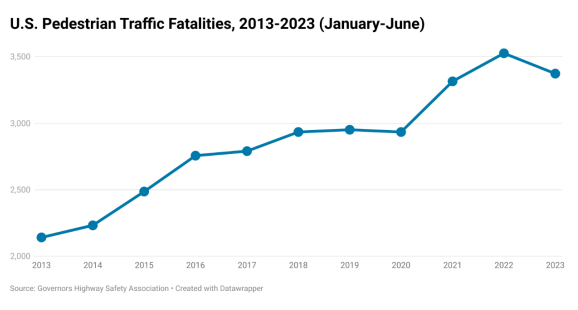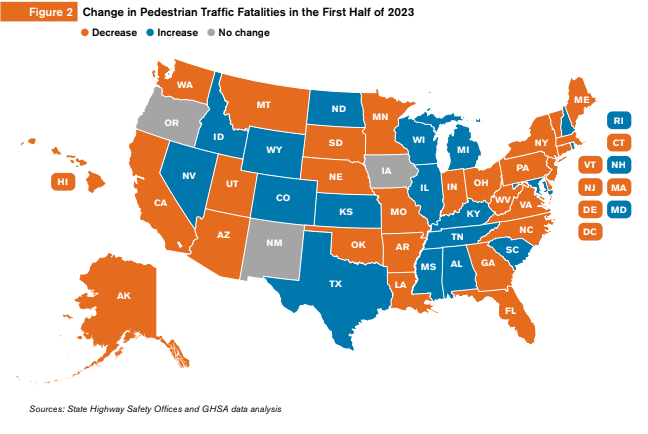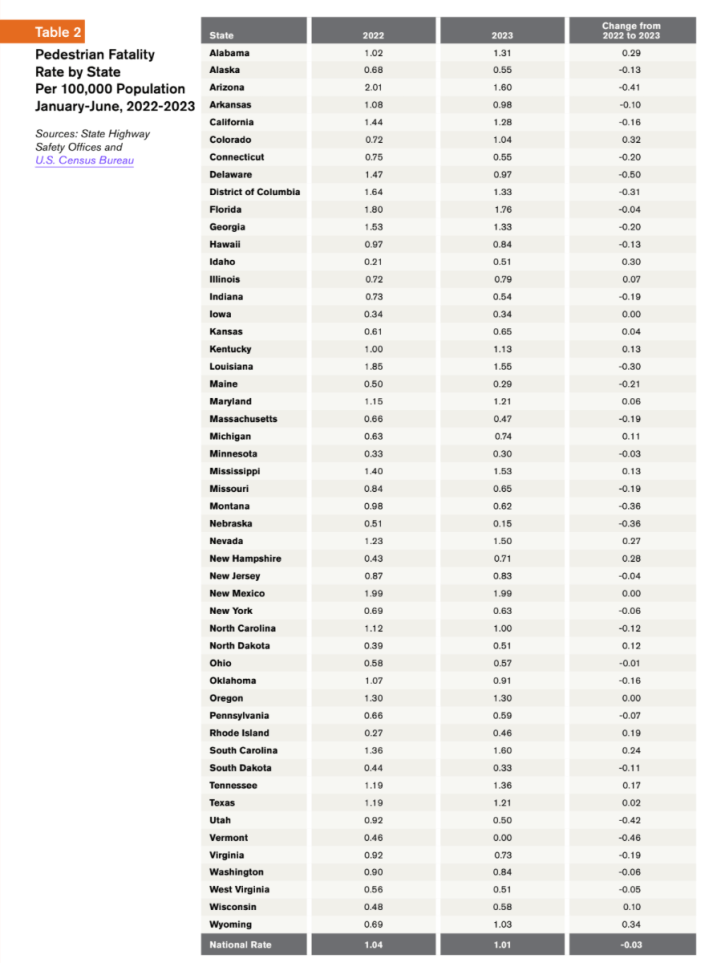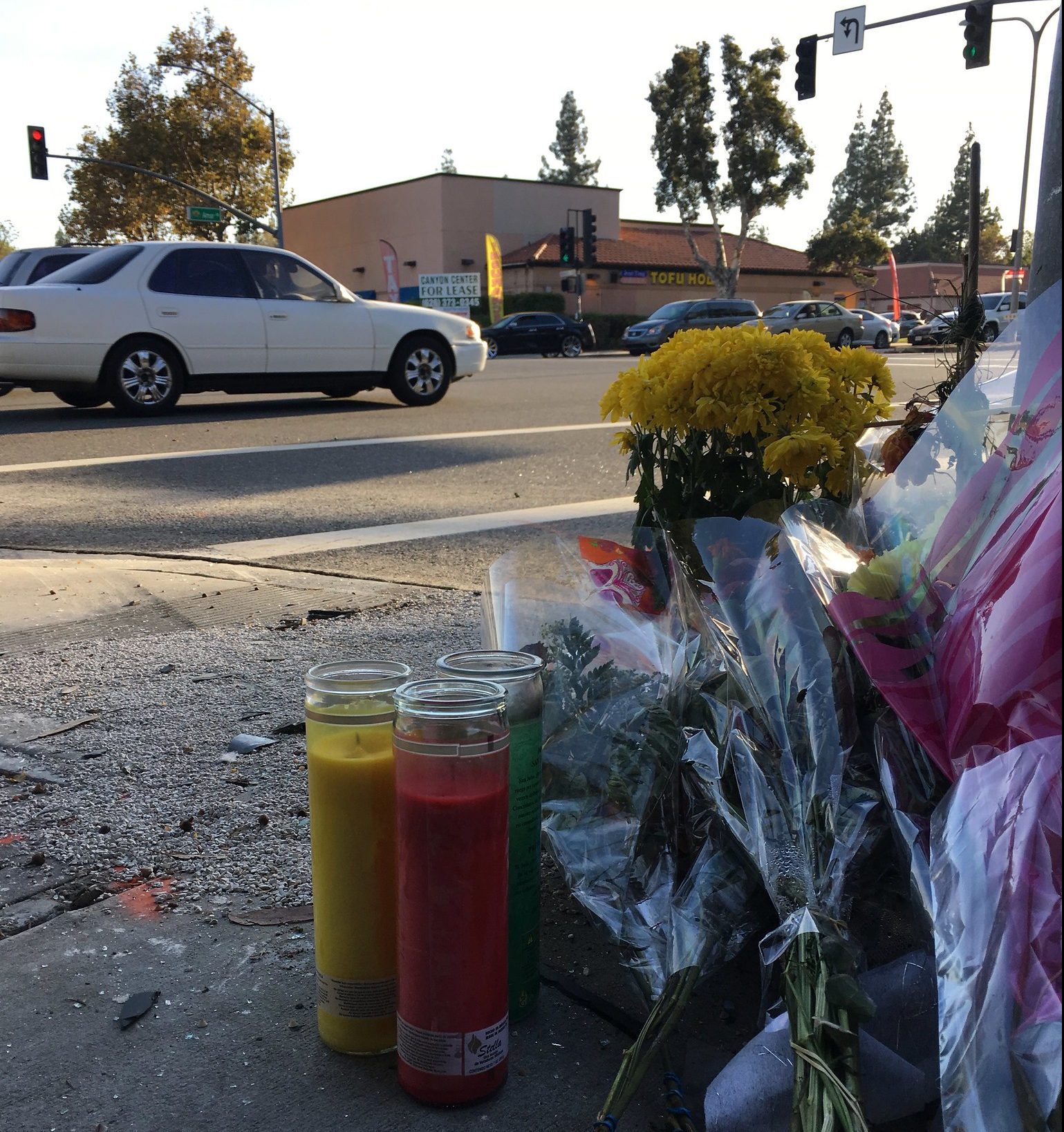America experienced a modest but heartening decrease in pedestrian deaths in the first half of last year, a new analysis projects — but the death toll is still higher than before the pandemic, and in some states, it's rapidly on the rise.
According to a new survey of state road safety offices — which, historically, have matched up fairly well with official US Department of Transportation death totals that take longer to compile — drivers killed four percent fewer walkers between January and June 2023 than they did over the same period the year prior, with more than 20 states, including Vermont, Nebraska, and Utah, posting eye-popping double-digit decreases.

Those glimmers of hope, though, were outshone by the glaring reality that 3,373 people still died on foot in the first half of last year — a number that puts 2023 on pace to be only the second-deadliest year for pedestrians since the late 1980s. Compared to early 2019, meanwhile, pedestrian deaths were up a shocking 14 percent.
"Of course, [a four-percent year-over-year decrease] is welcome news," said Russ Martin, senior director of policy and government relations for the Governors Highway Safety Association, which compiled the report. "But this is still way above what it was prior to the pandemic."
And some advocates worry that 2023's modest wins won't end up being as meaningful as they appear now. According to a November study of millions of anonymized cell phone users' mobility patterns, walking trips fell a stunning 36 percent between 2019 and 2022 — and if that trend continued into 2023, it could mean that America's crash reductions have more to do with people walking less than roads actually getting safer.

Still, Martin is tentatively optimistic that at least some of America's recent safety success is due to an increased focus on the systemic drivers of road violence, including the adoption of the National Roadway Safety Strategy in 2021. Some advocates (including me) argue that those strategies need to be more thoughtfully crafted and implemented with more urgency, but Martin says we shouldn't discount the critical first step we've already taken.
"One of the possible answers is that over the last several years especially, there’s just been more attention paid to pedestrian safety," Martin adds. "Lots of states are implementing Vision Zero programs; it could be that there’s more [interventions] happening that are having downward pressure on these numbers."
If Martin is right, that could help explain some of the recent report's surprising bright spots.

Perennially pedestrian-unfriendly Arizona, for instance, experienced a 19.6-percent decrease in walking deaths between the first half of 2023 and the same period the year prior, despite the fact that earlier data shows that walking trips were decreasing significantly slower in the Grand Canyon State than they were in others. (Though, to be fair, it still has one of the highest walking death rates per capita in the country.) Fast-growing Utah, meanwhile, posted a 45.2-percent decrease, making it one of the only notoriously dangerous Sunbelt states to fall below one pedestrian death per 100,000 residents. And mammoth California recorded an impressive 66 fewer deaths in a single year, an 11.7-percent dip.
If other states can replicate those successes without losing pedestrian modal share, Martin hopes it will prove that meaningful Vision Zero progress is possible in America — and that this will be only the first of many promising reports.
"We need to stay the course," he added. "We’ve talked a lot in the last few years about adopting the Safe Systems approach and creating overlapping safety nets on our roads, whether that means changing road design to separate people form vehicles, or better community outreach, or other elements of this multidisciplinary approach. ... It's possible to make progress if we keep going."






